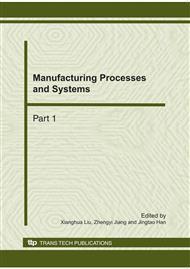p.1250
p.1254
p.1258
p.1264
p.1268
p.1273
p.1277
p.1281
p.1286
Luminescence of Cu2+-Doped ZnSe Quantum Dots with Different Parameters
Abstract:
Cu2+-doped ZnSe quantum dots (ZnSe:Cu2+ QDs) are synthesized in aqueous solution via a co-precipitation method with thioglycolic acid (TGA) as a stabilizer. Green emission is observed under 365 nm UV excitation. X-ray diffraction patterns and transmission electron microscopy image show that ZnSe:Cu2+ QDs are sphalerite cubic structure, similar to round in shape, the average diameter is 6 nm. The concentration of Cu2+ ions and TGA, pH, reaction time and aging time have influences on optical properties of ZnSe:Cu2+ QDs. The luminescence of as-prepared products with different parameters is characterized using fluorescence spectrophotometer. The high fluorescence intensity has been got when the concentration of Cu2+ ions is 4.0% (molar ratio), TGA is 83.4 μl (mol ratio Zn: TGA=1:2), pH is 9.5, reaction time is 2h. The luminous intensity increases with the extension of aging time.
Info:
Periodical:
Pages:
1268-1272
Citation:
Online since:
October 2010
Authors:
Keywords:
Price:
Сopyright:
© 2011 Trans Tech Publications Ltd. All Rights Reserved
Share:
Citation:


